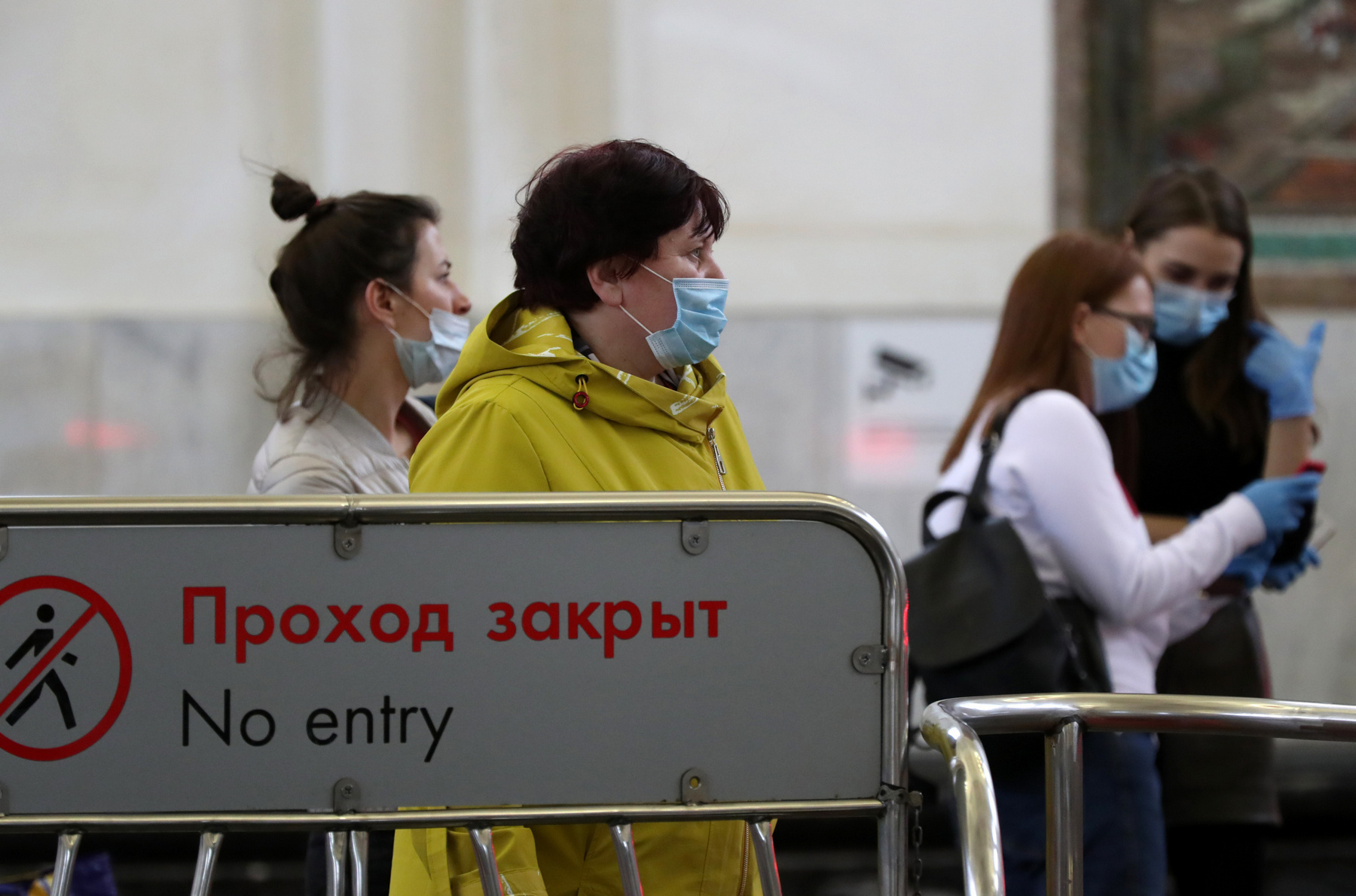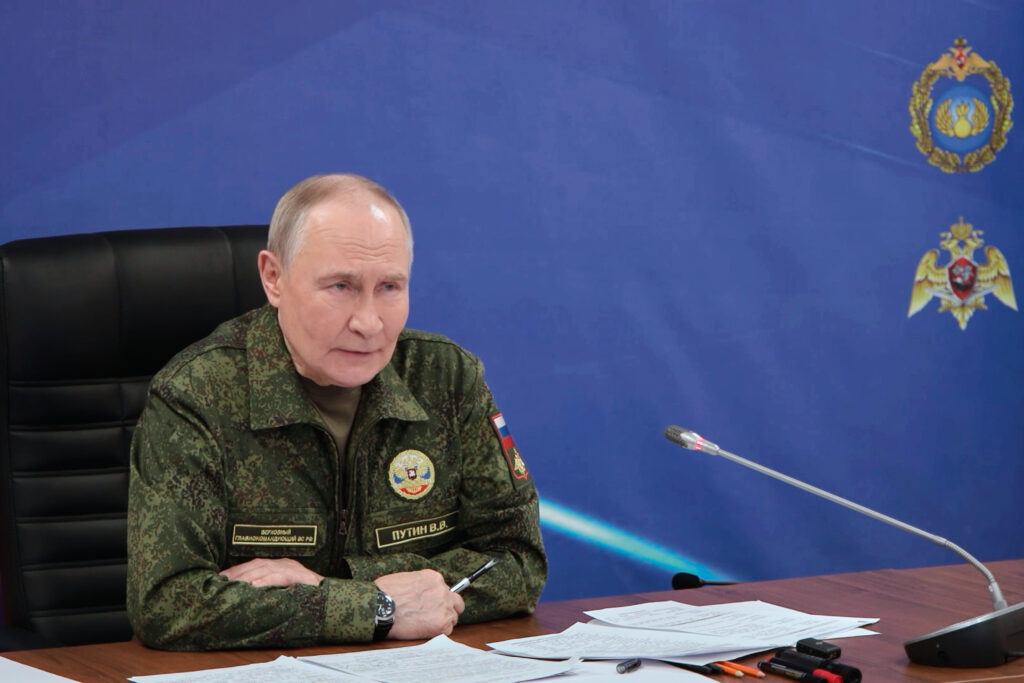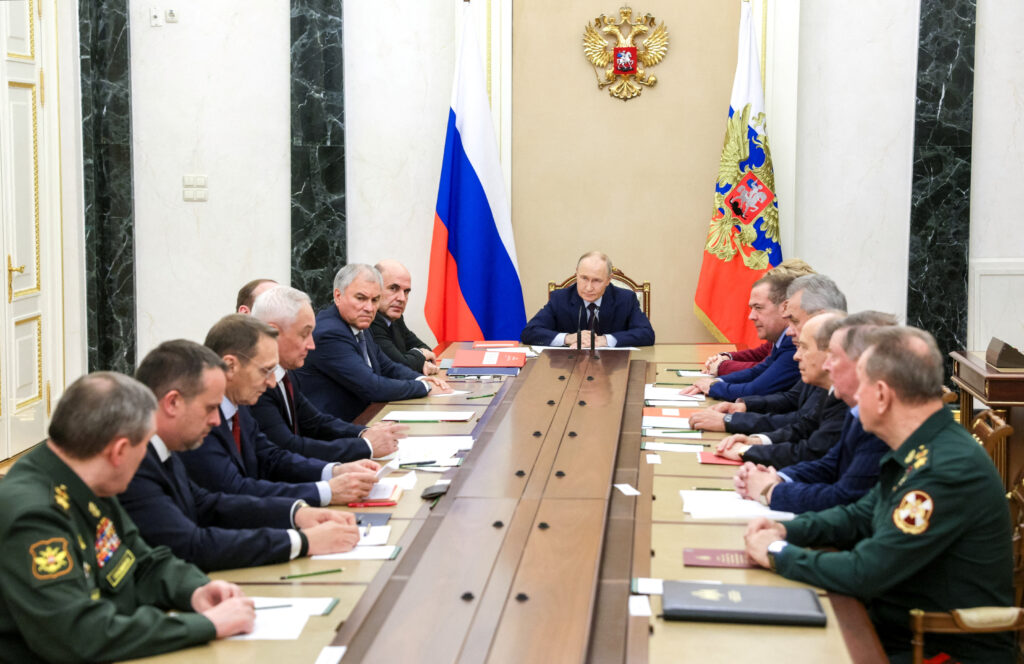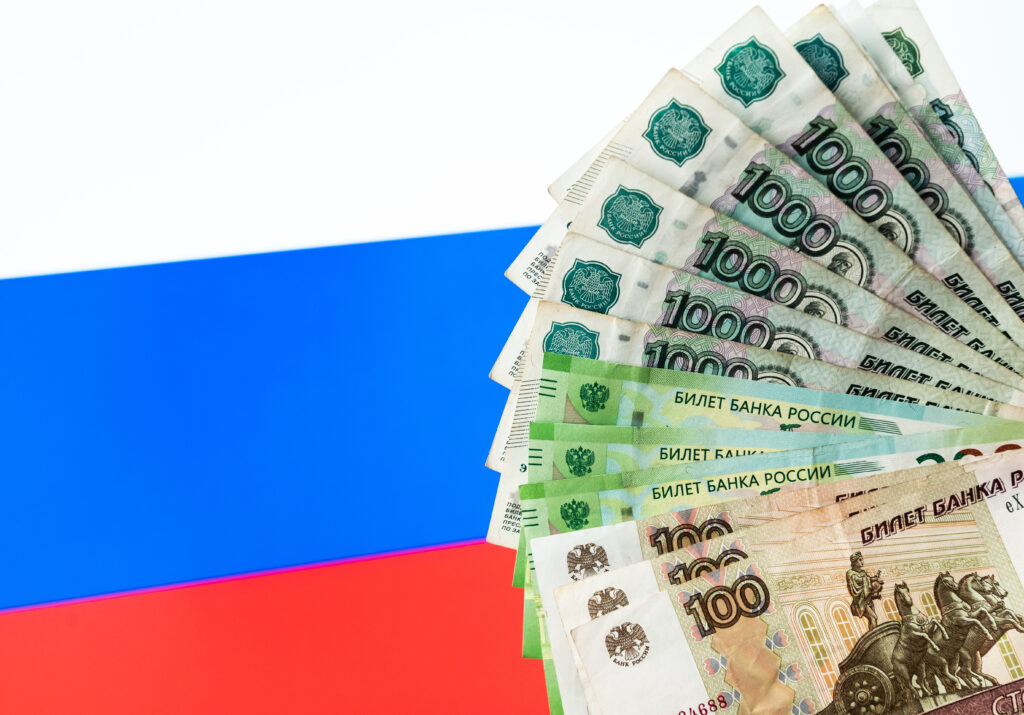There are at present more than 230,000 confirmed cases of COVID-19 in Russia. It is entirely clear that if Moscow had shut down all public activities more promptly, the country’s rate of infection could have been significantly slowed down or even reduced. This pandemic may well have revealed the most fatal flaw in the system of governance Vladimir Putin has constructed over the past two decades. That flaw is an unnatural imbalance in resources. This lopsided economy has led to catastrophe: the authorities were unable to shut Moscow down, simply because too many people depend on the capital.
In the United States, however, the authorities were able to shut down New York. The American economy proved resilient enough not to collapse as a result; surrounding states have been able to keep their heads above water. It is hard to fathom just how many Americans would have perished from this virus had the country been unable to isolate New York, the epicentre of the epidemic.
But it is very easy to fathom just how many people are getting ill and dying here in Russia.
Our country faces a tragic situation: while prosperous countries quarantine their infected cities, in Russia relatively healthy ones are locked down. Strict closures of inter-regional borders and mandatory quarantine for visitors are designed to save Russia’s provinces from repeating the fate of Moscow and St Petersburg. However, nowadays the only regions which can afford such strict quarantine regimes are those which do not already have strong migratory links to the two metropolises. That is to say, they are either wealthy regions with only a small number of internal migrant workers, or they are too distant from Moscow to supply the capital with migrant labour.
Hence none of the regions directly adjacent to Moscow could afford to completely sever ties with the capital. The same is true of the southern «underbelly» of St Petersburg: the Novgorod and Pskov regions.
Today up to 25 million people live in Moscow. At least, that is the estimate repeatedly given by the city mayoralty, for example, in 2016. A year ago, the mayoralty was able to confirm this estimate using data from mobile operators, according to which as many as 40 million people may be regularly drawn into Moscow’s urban life. Estimates for the number of foreign labour migrants in the capital range from 1.6 to three million. Therefore, the remainder are likely to be residents of the Russian provinces. And even according to the most conservative estimates, it appears that in the city of Moscow alone, without the surrounding Moscow region, there are at least nine million non-resident and predominantly adult working people, some of whom have their own accommodation in Moscow. Many of them arrive in the capital to work for a single short-term job, or even travel to work and back every day, spending two or three hours on the road. Thus if Moscow were fully closed down, the infection would simply have spread more slowly across Russia, but spread nonetheless. However, the threat of a social explosion would loom larger — and grow faster.
Moscow is surrounded by impoverished regions which would simply collapse if they were completely cut off from the capital. Again, the same can be said of St Petersburg, whose economy feeds a significant proportion of the inhabitants of the Leningrad, Novgorod, and even more distant Pskov regions. In short, several regions simply could not survive without access to the two cities’ labour markets. Their populations implicitly understand this, just as they are strongly attuned to the danger posed by the two infected cities. In these adjacent regions, fear for the future, neuroses, and the inability to stem the flow of people returning from Moscow and St Petersburg boiled over into discontent at «summer residents» (Muscovites and St Petersburgers who escape the big city to relax in the countryside — ed.) But even their absence would not have solved the problem. For example, if a summer resident returns to his regional dacha, or holiday home, he may face fines. If the fines intimidate him, he may twice about going to the local grocery store. Compare his example to that of a worker from the city of Petushki (in the Vladimir region adjacent to Moscow — ed.), who travels to Orekhovo-Zuevo, a satellite town of Moscow, to work shifts in a warehouse. If the summer resident from Moscow may or may not be allowed to enter the region, the local who works in Moscow will certainly be refused entry. He is in a double bind: if he is not allowed to leave Moscow and return home, he will have nowhere to sleep. If he is not allowed to enter Moscow to work, his family will go hungry.
In April, the Novgorod region introduced mandatory quarantine for all summer residents visiting the region. The first incident of self-isolating guests from the capital was announced by the Pestovsky district. By the end of the month, these quarantine requirements had been extended throughout the whole region. Since April 30, entry to two districts — the Chukovsky and Malovishersky districts — has been forbidden to all residents of other towns. The problem is that the ban, as in all regions neighbouring Moscow and St Petersburg, does not apply to local residents, many of whom have to work in these two cities and return home every day. The Lastochka passenger service pulls out of Veliky Novgorod, the regional capital, every day at 06:10, passing through Chudov at 7:16. By nine o’clock in the morning, workers from the Novgorod region reach the outskirts of St Petersburg. Among them are those who travel to the big city for a five-day stay: on weekdays, they stay in a dormitory or do their best to scrounge a place to stay at their workplace. On the weekends, they return home. Rosstat, the state statistical service, does not clarify whether these workers are taken into account in calculating the overall statistics for labour migration. It is probable that in recent years, state statisticians have only published data on those provincial residents who leave their homes for long periods of time at work elsewhere, or who relocate to the metropolises entirely. In 2018, Rosstat estimated that three million Russians were working outside their hometowns, more than half of whom were working in Moscow or the Moscow region. These data do not correlate with the Moscow mayoralty’s estimates for the capital’s population. In short, somebody is unaccounted for. In all likelihood, the majority of the capital’s unseen and unrecorded labourers are these same «shift workers», who originate from impoverished regions surrounding the Russian capital.
Nevertheless, even according to official figures from 2018, at least 12,500 people (or 2.1 percent of the total population) have left the Novgorod region to earn a living. Each migrant supports on average at least two more family members. Therefore, on the basis of official data, it can be assumed that almost 40,000 inhabitants of the Novgorod region depend on access to the labour markets of Moscow and St Petersburg — this amounts to 6.5 percent of the region’s population. It bears repeating that these data do not take into account the practically unrecorded flows of shorter-term labour migration to and from the province. According to Rosstat data, this figure comes to 9.05 percent in the Leningrad region and 11.89 percent in the Moscow region. These figures cannot be ignored.
It’s easy to understand provincial governments’ requests that summer residents not be allowed into remote rural areas. In many areas, officials have considered banning jaunts to countryside dachas entirely. So we can safely say that in this respect, Russia has taken the European path. However, not all those who travel from Moscow and St Petersburg to the back of beyond are summer residents. They may be internal migrants who, having lost their jobs in the capital, have been forced to return home. Or perhaps they haven’t lost their jobs, but continue to travel too Moscow and back every week or even every day.
On the other hand, regions which do not send significant numbers of labour migrants to the capital have been able to fully shut themselves off from Moscow. This was why Tatarstan and the Tyumen region were able to oblige everybody arriving from Moscow to self-isolate, regardless of where they are formally registered as residents. That means that both Muscovites and Tyumen locals are required to spend two weeks in self-isolation as soon as they cross into the Tyumen region. This measure was only made possible because Tyumen does not suffer economically from an interruption to the migration of people from Moscow and other regions.
In contrast, the neighbouring Kurgan region cannot afford to close its borders — it is one of the main suppliers of migrant labour in the Urals. Officially, labour migration from the region stands at 2.68 percent. The unofficial statistics are staggering. In the Kurgan region there are not only villages, but even cities — for example, Kurtamysh — where practically everybody but children, pensioners, and state employees has left for Tyumen, Omsk, or Yekaterinburg to work. Entry into the Kurgan region was restricted during the May holidays, but the rule only affected absentee residents of the region. Meanwhile, people arriving who had local residency — meaning labour migrants — were able to enter the region without incident. In fact, they are exempt from mandatory self-isolation.
Two poor regions near Moscow — the Ivanovo and Vladimir regions — also demonstrate the impossibility of full isolation from the capital. Officially, both provide the same level of labour migration for export to other regions: approximately 4.6 percent of their respective populations.
Local officials in the Ivanovo region were among the first to announce that Muscovites were no longer welcome in the area. They even advised Ivanovo residents not to rent their apartments to Muscovites. In mid-April, head of the regional health authority Artur Fokin announced that all persons entering the region were to be quarantined for 14 days. Local residents, on the other hand, were encouraged to report on their arrival back home voluntarily. The local press has constantly reassured its readers that nobody would cast aspersions on people from the province returning from Moscow. The website of the bus station in Ivanovo city, for example, includes a link to a portal for issuing electronic passes to enter Moscow; these are not tricky to obtain for security guards, builders, or retail workers. And while the number of bus journeys from the region has reduced slightly, people still leave Ivanovo every Monday night for work in Moscow, much as they did before the pandemic. Moscow welcomes them, and they return to Ivanovo for the weekend.
There has been no talk of severing ties between Moscow and the Vladimir region, where authorities considered implementing quarantine in early April. On April 16, governor Vladimir Sipyagin announced a new special regime in the region’s Petushkinsky district: absent summer residents would be barred from entering the area, while the movement of local residents arriving home after working elsewhere was not. That was as far as the region went to isolate itself from Moscow. Thousands of people travel on trains to the capital every day from the Petushkinsky district alone, a journey which takes two and a half hours. A fast service has been launched specially for labour migrants, which leaves Petushki at 07:05. The workmen arrive in Moscow one hour and 52 minutes later. In the evening, thousands of them return back. As any brief visit to the railway station in the evening will reveal, the workers are still out and about. Almost half of all vacancies on job searching websites in the Ivanovo, Vladimir, Kaluga, Tula, and Tver regions are advertised as being in Moscow or the surrounding Moscow region. Residents of these regions are also eager to find jobs in St Petersburg.
In conclusion, during the COVID-19 pandemic it has been impossible to fully isolate Moscow and St Petersburg from the regions for one simple reason: poverty does not permit it. After years of prospering at the expense of resources and labour from impoverished surrounding regions, Russia’s two metropolises are left with an unenviable choice: either they close the gates and condemn these poor regions to starvation, or allow people from the hinterland in, to earn a little money. For the money is in Moscow, the jobs are in Moscow, and the hospitals are in Moscow. The provinces can offer their inhabitants little in comparison — a fact which, in light of the pandemic, has been made all too visible.










